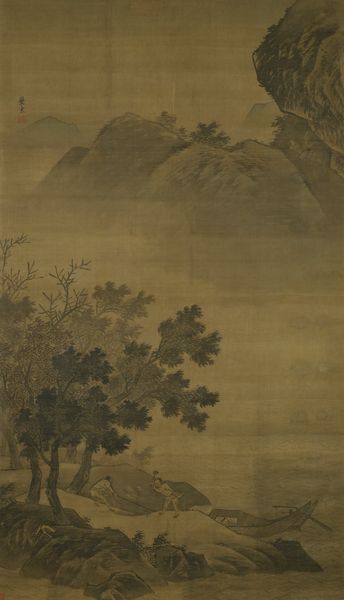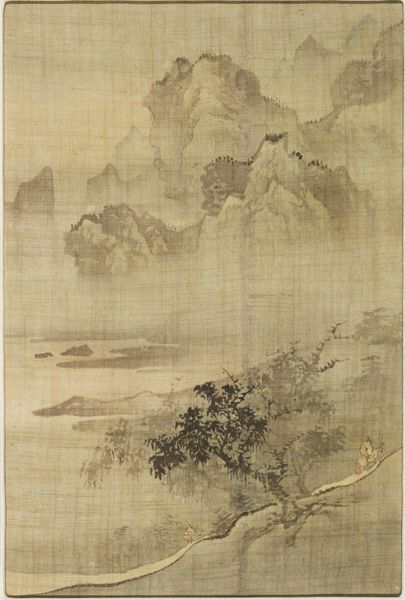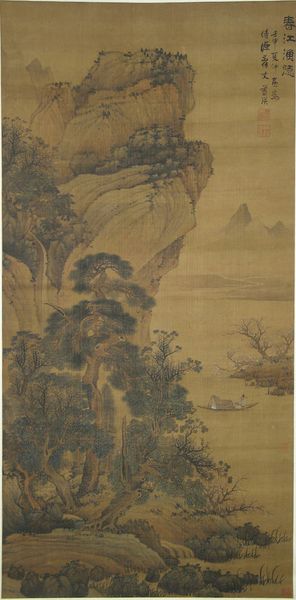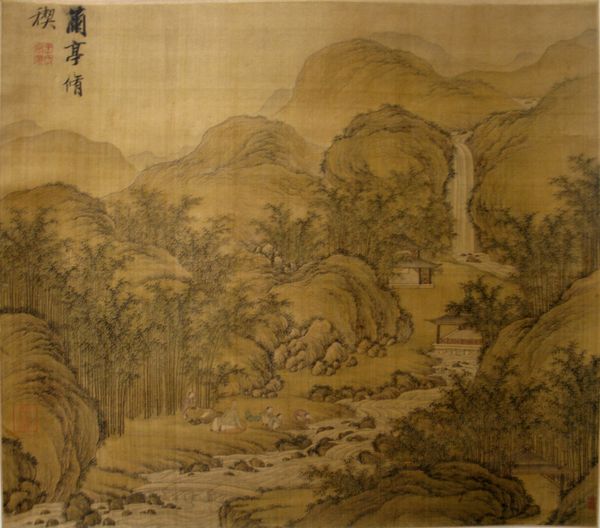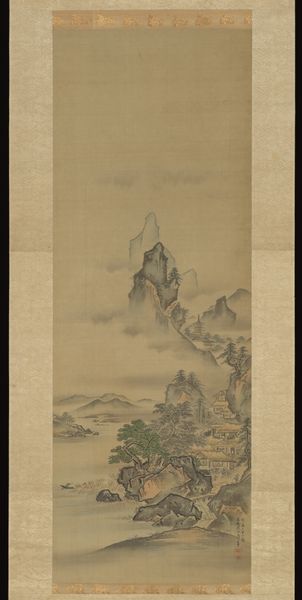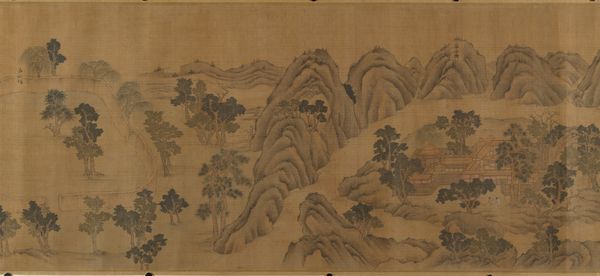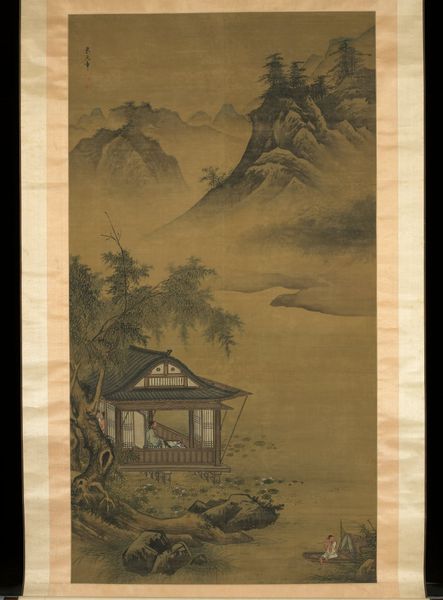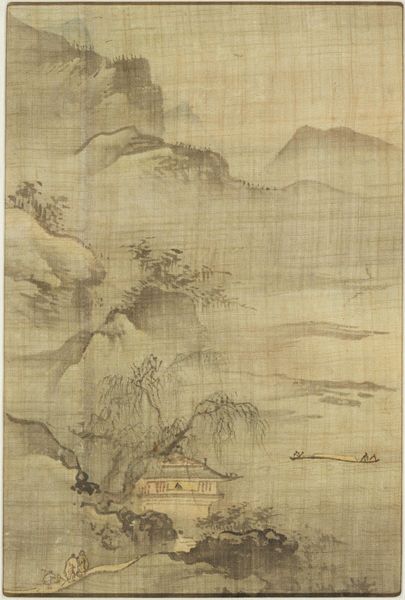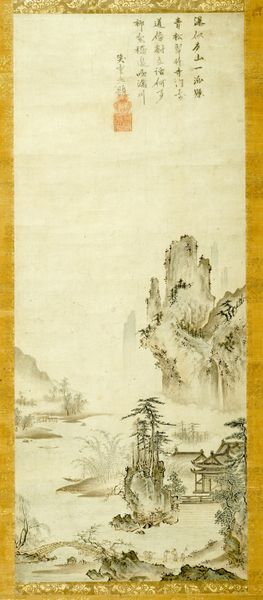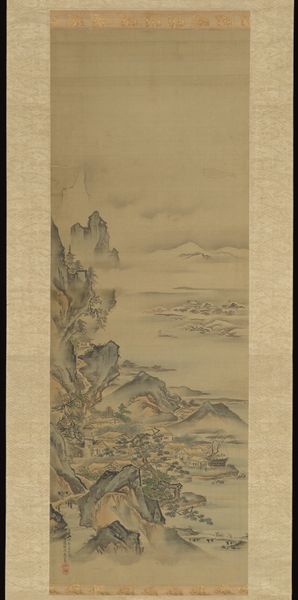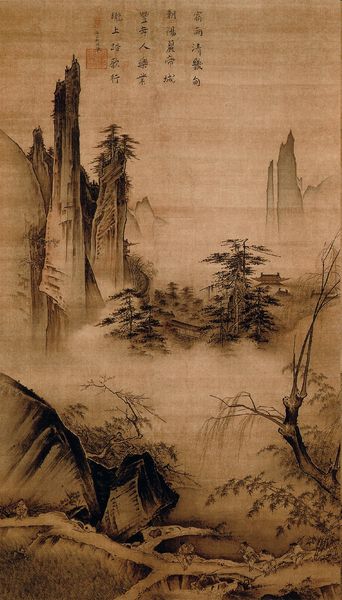
tempera, painting, paper, ink, pencil
#
tempera
#
painting
#
asian-art
#
landscape
#
figuration
#
paper
#
22_ming-dynasty-1368-1644
#
ink
#
pencil
Dimensions: Image: 70 x 40 5/8 in. (177.8 x 103.2 cm) Overall with mounting: 10 ft. 5 1/2 in. × 49 5/8 in. (318.8 × 126 cm) Overall with knobs: 10 ft. 5 1/2 in. × 53 1/4 in. (318.8 × 135.3 cm)
Copyright: Public Domain
Editor: This is "Li Bai Gazing at the Waterfall on Mount Lu," a painting created sometime in the late 1480s or 1490s, using ink and tempera on paper. It's remarkably vertical and evokes a sense of reverence because of the sheer size of the mountains. How would you interpret its composition? Curator: The painting's monumentality derives primarily from the stark contrast in scale and tone. Note the dramatically diminished figures against the overwhelming landscape, an effect emphasized by the varying ink densities. Observe how this contrast manipulates spatial perception and contributes to a unique compositional rhythm. Editor: I see what you mean. The mountains and the waterfall use a darker wash of ink, making the figures stand out as an important focal point. What about the way the mountains are drawn? It’s like looking at an illustration rather than a photograph. Curator: Indeed. The structural forms here are not imitative of naturalistic observation but rather employ abstract conventions common to its time. These conventions signify mass, height, and distance—consider, for example, how line weight modulates to suggest receding planes. The visual vocabulary here, understood through its historical semiotics, guides our reading. Do you perceive any intentional disruption in this visual language? Editor: Well, now that you point it out, the small pavilion seems to defy the perspective. The ladder and bridge also look a little awkward! It feels like I’m seeing different perspectives at once. Curator: Precisely. These “errors,” as some might see them, can be interpreted as deliberate breaks, challenging our expectations and activating our perception of pictorial space. Through its visual syntax, it asks us to consider how we look, not just at what we see. Editor: This has given me so much to think about regarding the artist's intention and the painting's structural elements! Curator: I agree. The interplay of forms, the visual language deployed, offers a rigorous lens for understanding the work's conceptual depth.
